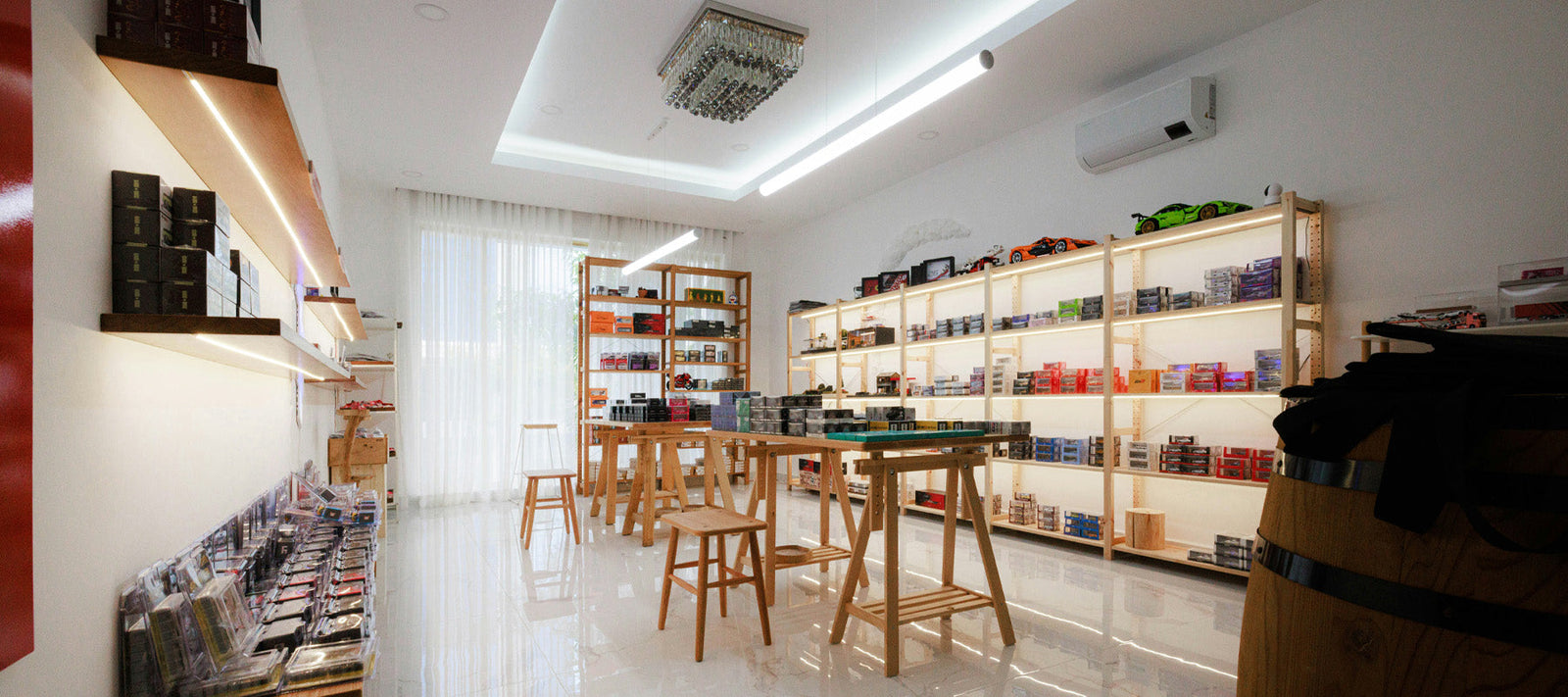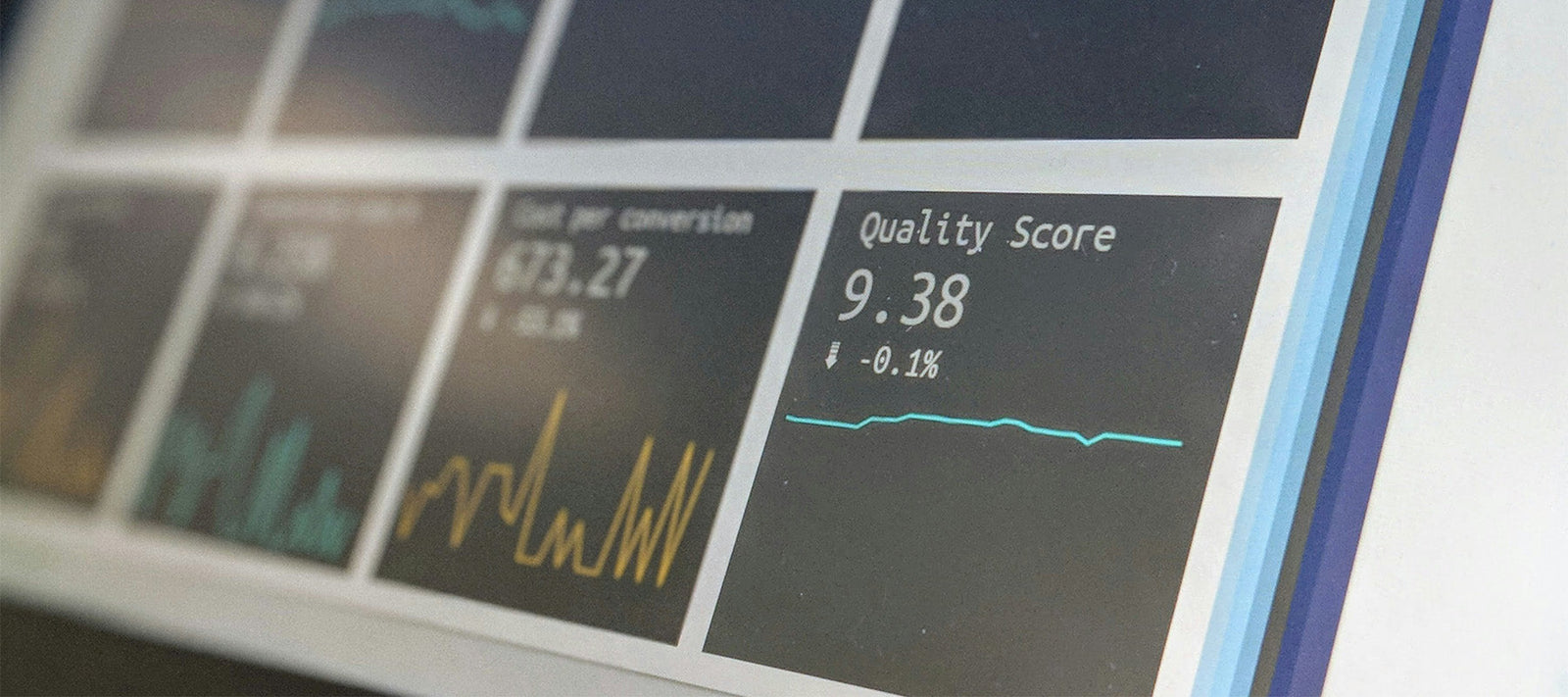In today’s competitive retail landscape, every dollar counts. Retail displays are not only about showcasing products but also about creating immersive customer experiences that drive sales. However, like any investment, it’s essential to know whether your retail display initiatives are paying off. This blog post explores the strategies and tools for maximising ROI (Return on Investment) and effectively measuring the performance of your retail display investments. Whether you’re a brick-and-mortar store manager or a retail marketing strategist, understanding these metrics can help you optimise your displays, allocate your budget wisely, and ultimately boost your bottom line.
1. Introduction: The Value of Retail Displays
Retail displays have evolved from simple product showcases into dynamic, multi-sensory experiences designed to captivate consumers and influence their buying decisions. With the rise of innovative point-of-sale (POS) displays and interactive installations, retailers are investing heavily in these tools. However, to justify these investments, it’s critical to measure the effectiveness of your retail displays accurately. By tracking key metrics, you can ensure that every dollar spent on design, technology, and placement contributes to increased revenue and a stronger brand presence.
2. The Business Case for Retail Display Investments
Investing in retail displays isn’t merely an aesthetic decision; it’s a strategic business move. Here are several reasons why robust ROI measurement is essential:
- Increased Sales: Well-designed displays can drive impulse purchases and boost overall sales by engaging consumers at the point of decision.
- Enhanced Brand Image: Retail displays contribute to a cohesive brand experience. Consistent, high-quality displays reinforce brand identity and build customer loyalty.
- Customer Engagement: Interactive and dynamic displays encourage customer interaction, leading to a deeper connection with the brand.
- Competitive Advantage: In crowded marketplaces, innovative retail displays can differentiate your brand from competitors, drawing in new customers.
- Data-Driven Decisions: Measuring the ROI of retail displays enables businesses to allocate resources more effectively, scaling successful campaigns and rethinking underperforming strategies.
With these benefits in mind, the ability to measure and optimise the impact of retail displays becomes a crucial part of your overall retail strategy.
3. Key Performance Indicators (KPIs) for Retail Display ROI
To gauge the success of your retail display investments, it’s essential to establish and track clear KPIs. Here are some of the most critical metrics:
Sales and Revenue Impact
One of the most straightforward ways to measure ROI is by tracking the correlation between your display and sales performance. Metrics to consider include:
- Incremental Sales: Measure the additional revenue generated during periods when the display is active versus when it’s not.
- Average Transaction Value (ATV): Analyze whether the display influences consumers to spend more per visit.
- Sales Conversion Rate: Track the percentage of customers who make a purchase after interacting with the display.
Customer Engagement Metrics
Customer engagement provides insight into how effectively your display captures attention and encourages interaction. Useful metrics include:
- Dwell Time: The average time a customer spends in the vicinity of the display.
- Interaction Rate: The number of customer interactions (touches, scans, or digital engagements) divided by total foot traffic.
- Repeat Engagement: Frequency with which the same customers interact with the display over time.
Conversion Rates and Impulse Purchases
Impulse purchases can significantly enhance ROI. To measure this:
- Conversion Rate of Impulse Buys: Evaluate the percentage of customers who make a spontaneous purchase due to an attractive display.
- Basket Size Change: Monitor changes in the average number of items per transaction that may be linked to strategic display placements.
- Customer Journey Tracking: Analyze paths that lead from display interaction to purchase, identifying key moments where impulse decisions are made.
Brand Awareness and Recall
Although more challenging to quantify, brand awareness and recall are critical indicators of a display’s long-term impact:
- Surveys and Focus Groups: Collect feedback on how well the display reinforces brand messaging.
- Social Media Mentions: Track the frequency and sentiment of social media posts referencing the display or its promotions.
- Post-Purchase Surveys: Ask customers if the display influenced their decision-making process.
By combining these KPIs, you can form a comprehensive picture of your retail display’s performance and its contribution to your overall marketing objectives.
4. Tools and Techniques for Measuring ROI
Measuring the ROI of retail displays requires a mix of technology, data analytics, and traditional research methods. Here are some of the most effective tools and techniques:
In-Store Analytics and Heat Mapping
Heat mapping technology uses sensors and cameras to track customer movement within the store. By analyzing these heat maps, you can:
- Identify High-Traffic Areas: Determine which parts of your store generate the most interest and adjust display placement accordingly.
- Assess Engagement: See how long customers spend near your display and which elements attract the most attention.
- Optimise Layouts: Use data-driven insights to refine your store layout for better flow and increased display interaction.
POS and Transaction Data
Integrate data from your point-of-sale systems to directly correlate display activity with sales:
- Time-Stamped Sales Data: Compare sales data during display activation periods with baseline periods.
- Product-Specific Sales: Identify if products featured in your display see a higher sales volume compared to others.
- Cross-Selling Opportunities: Analyze how your display might be driving the sale of complementary products.
A/B Testing and Controlled Experiments
A/B testing involves comparing two versions of a display or promotional setup to determine which performs better. Consider:
- Different Designs: Test varying visual elements (e.g., color schemes, graphics, layouts) to see which drives higher engagement.
- Placement Variations: Experiment with different locations in your store to identify optimal display placements.
- Promotional Offers: Evaluate different promotional messages or offers to see which one results in higher conversions.
Surveys and Customer Feedback
Direct feedback from customers can provide invaluable insights:
- Post-Interaction Surveys: Ask customers how the display influenced their shopping experience.
- Focus Groups: Conduct in-depth sessions to gather qualitative insights on display effectiveness.
- Digital Feedback Tools: Use QR codes or SMS surveys linked to your display for real-time feedback.
Each of these tools offers a unique perspective on your retail display’s performance. Combining quantitative data with qualitative insights will give you a holistic view of how your investment is paying off.
5. Best Practices for Maximizing ROI
Achieving a high ROI from your retail display investments involves not only tracking the right metrics but also implementing best practices in design, placement, and continuous improvement:
- Align with Business Goals: Ensure your display strategy supports broader business objectives, whether it’s increasing sales, promoting new products, or building brand awareness.
- Keep It Dynamic: Regularly update your displays to reflect seasonal trends, new product launches, or promotional campaigns. A static display can quickly lose its appeal.
- Optimise for Engagement: Focus on creating interactive and visually compelling displays that encourage customer interaction. Use digital elements to provide personalized experiences.
- Train Staff: Educate your staff on the importance of the display and how they can encourage customers to engage with it. Employee advocacy can amplify the impact of your displays.
- Monitor and Adapt: Use real-time data to continually assess performance. Be ready to make adjustments based on customer behavior, sales trends, or new market insights.
- Integrate Omnichannel Strategies: Connect your in-store displays with your online channels. For example, using QR codes to direct customers to mobile promotions can bridge the gap between physical and digital experiences.
By following these best practices, you can ensure that your retail display investments yield the highest possible returns.
6. Overcoming Common Challenges in ROI Measurement
Measuring the ROI of retail displays isn’t always straightforward. Here are some common challenges and strategies to overcome them:
-
Attribution Complexity:
Challenge: It can be difficult to isolate the impact of a display from other marketing efforts.
Solution: Use controlled experiments and A/B testing to compare performance with and without the display. Implement robust tracking systems that integrate data from various sources. -
Data Overload:
Challenge: With multiple data points from in-store analytics, POS systems, and customer feedback, it can be overwhelming to determine which metrics matter most.
Solution: Define your primary KPIs based on your business objectives and focus on those metrics. Use dashboards and data visualization tools to simplify analysis. -
Changing Consumer Behavior:
Challenge: Consumer preferences and shopping habits can shift, making it hard to gauge long-term ROI.
Solution: Regularly update your measurement techniques and remain agile in your approach. Continuous testing and customer feedback help ensure your metrics stay relevant. -
Integration of Offline and Online Data:
Challenge: Bridging data from in-store experiences with digital interactions is often complex.
Solution: Invest in omnichannel analytics platforms that consolidate offline and online data to provide a comprehensive view of customer behavior.
Addressing these challenges proactively will help you develop a more accurate and actionable ROI measurement strategy.
7. Case Studies: Real-World Success in Measuring and Maximising ROI
Case Study 1: Boosting Impulse Purchases in a Fashion Retail Store
A leading fashion retailer implemented a dynamic, interactive display featuring the latest accessories and seasonal promotions. By integrating heat mapping and POS data, the retailer discovered that the display increased impulse purchases by 20%. Adjustments such as repositioning the display near the checkout and updating content more frequently further enhanced performance, resulting in a measurable uptick in average transaction value.
Case Study 2: Enhancing Brand Engagement Through Digital Displays
A popular electronics store invested in digital displays that offered interactive product demonstrations. Using customer surveys and A/B testing, the store identified that interactive elements drove a 35% increase in customer dwell time. This additional engagement correlated with a 15% boost in overall sales for featured products, demonstrating the effectiveness of blending technology with physical displays.
Case Study 3: Integrating Omnichannel Data for Grocery Retail
A regional grocery chain implemented an omnichannel strategy that connected in-store displays with their mobile app. By using QR codes and tracking digital engagement, the retailer could correlate increased in-store interaction with higher app usage and personalized promotions. This integrated approach resulted in a 25% improvement in ROI from display investments, as customers were more likely to redeem offers and make repeat purchases.
These case studies illustrate how targeted measurement and strategic adjustments can significantly enhance the ROI of retail display investments.
8. Future Trends in Retail Display Analytics
As technology evolves, so does the landscape of retail display measurement. Here are some emerging trends to watch:
-
Artificial Intelligence (AI) and Machine Learning:
AI-driven analytics will increasingly provide real-time insights into customer behavior, allowing for dynamic display adjustments that optimize performance on the fly. -
Augmented Reality (AR) Integration:
AR-powered displays offer immersive experiences that can be tracked and analyzed, providing deeper insights into customer interactions and preferences. -
Advanced Omnichannel Measurement:
The integration of offline and online data will become more seamless, enabling retailers to understand the full customer journey and better attribute sales to specific display interactions. -
Predictive Analytics:
Using historical data and trend analysis, predictive models will forecast display performance, allowing retailers to preemptively adjust strategies for maximum ROI.
Embracing these trends will not only improve the measurement of ROI but also empower retailers to create increasingly engaging and effective display strategies.
Transforming Data into Actionable Insights
Maximizing ROI from your retail display investments is a multifaceted process that blends creative design, advanced analytics, and strategic planning. By establishing clear KPIs, employing the right measurement tools, and embracing best practices, you can turn data into actionable insights that drive sales and enhance customer engagement.
In an era where every interaction counts, understanding the true impact of your retail displays is critical. Whether you’re aiming to boost impulse purchases, increase brand awareness, or create a more integrated shopping experience, a robust ROI measurement strategy will ensure that your investments deliver measurable value. As technology continues to advance, staying ahead of the curve with innovative analytics solutions will be the key to sustained success in a competitive market.
Are you ready to take your retail display strategy to the next level? Contact us today to learn how our cutting-edge analytics and design solutions can help you measure and maximize the ROI of your retail display investments. Let’s work together to transform your in-store experience into a powerful revenue driver.
Final Thoughts
Measuring the effectiveness of your retail display investments isn’t just about tracking numbers—it’s about understanding how every element of your display influences customer behavior and contributes to your overall business objectives. By leveraging modern analytics tools, setting clear KPIs, and continuously refining your approach, you can ensure that every display is a step toward greater profitability and customer satisfaction.
Invest in data-driven strategies, embrace innovative technologies, and let your retail displays tell a compelling story that not only attracts customers but also converts interactions into lasting loyalty. With a keen eye on ROI, your retail displays can become a cornerstone of your marketing strategy, delivering measurable results and driving long-term success.
Happy measuring, and here’s to maximizing the impact of every retail display investment!
Whether you’re just starting to explore the benefits of innovative retail displays or looking to refine your existing strategy, the insights shared here can help guide your efforts. Use these tools and techniques to measure, analyze, and optimise your displays, ensuring that every dollar invested contributes to building a stronger, more engaging retail environment.






